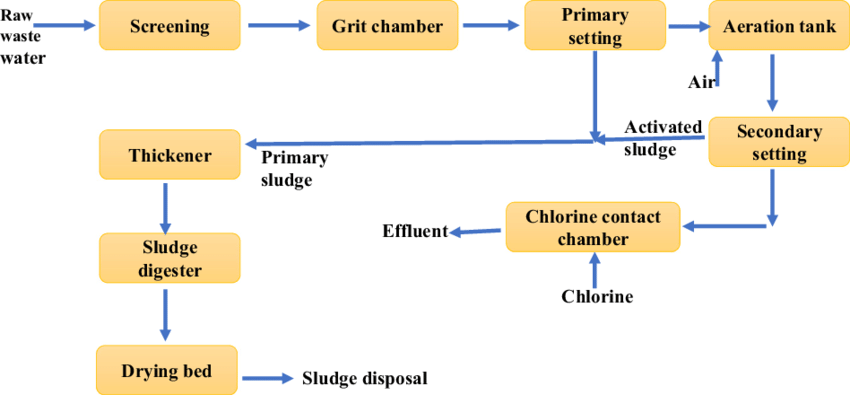The Definitive Guide for Reclaim Waste
Table of ContentsThe Ultimate Guide To Reclaim WasteThe Reclaim Waste StatementsThe Main Principles Of Reclaim Waste Getting My Reclaim Waste To WorkLittle Known Questions About Reclaim Waste.
Explore the types, incidents, and forms of fluid waste. Domestic sewer waste refers to the waste and items from a residential septic system. This kind of waste is developed by humans in residences, institutions, and various other buildings. This only includes sewage-disposal tanks that have a drain area. The correct monitoring and disposal of domestic sewer waste need liquid waste to be moved to a sewage therapy plant where the appropriate methods and tools are related to detoxify and deal with waste.
Industrial waste often consists of possible risks, such as combustible materials or a combination of fluid and solid waste products, and needs an advanced and in-depth disposal procedure. The disposal of business waste generally includes the purification of waste prior to transportation to make sure safe and appropriate disposal. Industrial waste is developed from byproducts and drainage of commercial processes and manufacturing.
This kind of waste can not make use of the very same sewage management transportation or processes as septic or industrial liquids. The hazardous waste monitoring procedure calls for the inspection and testing of liquid waste before it goes through the disposal process (liquid waste disposal melbourne). Runoff waste is the liquid waste that comes from runoff and excess stormwater in highly inhabited locations or cities
Drainage waste can trigger contamination and flooding otherwise handled properly. Discover more regarding sewer cleansing and waste monitoring. Making certain appropriate waste management can stop disasters and reduce ecological damage. Both individuals in domestic settings and professionals in business or manufacturing markets can benefit from understanding the procedures and laws of fluid waste management.
3 Simple Techniques For Reclaim Waste
Contact PROS Providers today to discover our waste management and disposal solutions and the proper means to care for the fluid waste you produce.
(https://www.callupcontact.com/b/businessprofile/Reclaim_Waste/9368278)This supposed 'wastewater' is not only an essential resource yet, after therapy, will be released to our land, waterways or the ocean. Utilized water from toilets, showers, baths, kitchen area sinks, laundries and commercial procedures is known as wastewater.

water used to cool down machinery or clean plant and devices). Stormwater, a kind of wastewater, is runoff that streams from agricultural and metropolitan locations such as roofing systems, parks, yards, roads, paths and rain gutters right into stormwater drains, after rainfall. Stormwater streams unattended straight to neighborhood creeks or rivers, eventually reaching the ocean.
Not known Factual Statements About Reclaim Waste
In Queensland, most wastewater is treated at sewage treatment plants. Wastewater is moved from residential or commercial websites via a system of sewers and pump stations, referred to as sewage reticulation, to a sewer therapy plant. Regional governments build, preserve and operate most sewage treatment plants. Operators are licensed under the Environmental Protection Act 1994 to discharge treated wastewater at an appropriate environmental requirement into waterways.
The Department of Natural Resources suggests regional governments concerning handling, operating and preserving sewage systems and treatment plants. In unsewered areas, neighborhood governments may need homeowners to mount private or family sewer treatment systems to deal with domestic wastewater from commodes, cooking areas, washrooms and washings. The Department of Natural Resources authorizes the usage of family systems when they are verified to be efficient.
In some new communities, therapy of some stormwater to eliminate litter, sand and crushed rock has begun utilizing gross pollutant traps. Wastewater therapy takes place in 4 phases: Gets rid of strong issue.
Wastewater after that streams right into large containers where solids clear up and are gotten rid of as sludge. Grease and scum are skimmed from the surface. Uses small living microorganisms referred to as micro-organisms to break down and get rid of remaining liquified wastes and fine fragments. Micro-organisms and wastes are included in the sludge. Gets rid of nitrogen and phosphorus nutrients that could create algal blooms in our waterways and intimidate aquatic life.
The Greatest Guide To Reclaim Waste
Nutrient removal is not available at all sewage treatment plants because it needs expensive specialized tools. Clear fluid effluent generated after therapy may still consist of disease-causing micro-organisms - liquid waste removal.

The majority of wastewater streams into the sewage system. Under the Act, regional governments administer approvals and permits for eco pertinent tasks (Periods) entailing wastewater releases that could have a local influence.
Examine This Report about Reclaim Waste
Otherwise, examples are taken for lab analysis. Typically numerous tests are needed to develop the levels of each of the different contaminants such as oils, heavy steels and chemicals in water. Surveillance supplies accurate information about water top quality and can verify that permit problems are being satisfied. The info gotten via tracking gives the basis for making water top quality choices.